 Several years ago, I picked up a book 100% because of its dramatic cover. On the cover was a scuba diver in yellow to red waters with a thought bubble asking, “How could we let this happen?” As I began reading, I found not only captivating design and illustrations, but also an interesting book about fish…or, rather, the lack of fish. That book was World without Fish (Grades 5-12, Lexile 1230) by Mark Kurlansky.
Several years ago, I picked up a book 100% because of its dramatic cover. On the cover was a scuba diver in yellow to red waters with a thought bubble asking, “How could we let this happen?” As I began reading, I found not only captivating design and illustrations, but also an interesting book about fish…or, rather, the lack of fish. That book was World without Fish (Grades 5-12, Lexile 1230) by Mark Kurlansky.
This book left such an impact on me, a woman from the Midwest who doesn’t have a particularly strong connection to the sea. I’ve since found myself gravitating towards children’s books that can bring students closer to the ocean. After all, oceans are crucial to earthly life. They cover three quarters of the earth’s surface—regulating climate, feeding millions, producing oxygen, providing habitats for an array of wildlife, supplying us with resources for medicine…and much more (http://www.un.org). The Ocean’s story is uniquely powerful for helping kids understand how very interconnected we are with one another and the world.
Illustrated works about the deep help connect students to this vast, mysterious watery world of the sea. With the visual help illustrations provide, students can grasp new vocabulary and concepts more readily. Below are glimpses into a handful of standout illustrated children’s books about the ocean.
Imagine a World without Fish
World without Fish examines why fish populations around the world are threatened and what young readers can do to help fix the problem.
Author Mark Kurlansky explains how continued overfishing of the earth’s waters will lead to oceans devoid of fish. Overfishing threatens the biodiversity that is crucial to sustain life. Because of the interconnectedness of life on earth, as one species declines, others are threatened. Readers are asked to imagine a world where there are no more fish.

The ocean is pink, overgrown with the plankton on which the extinct fish used to feed. Jellyfish, no longer threatened by fish predators, thrive in the pink waters as they feed on the plentiful plankton. The scene sounds surreal, far-fetched; in reality, there are already parts of the ocean that have already experienced such conditions.
Kurlansky’s thorough analysis of the problem touches on evolution, biology, climate change, pollution, and the history of fishing. He includes the views of scientists and fisherman and discusses commercial and political influences.
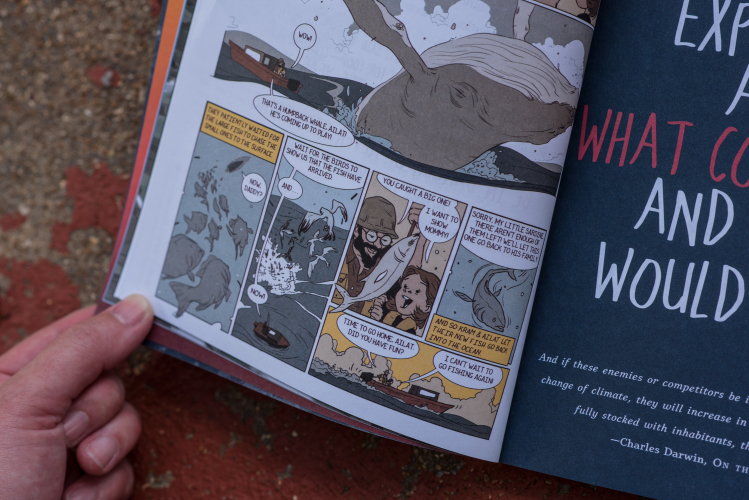
Kurlansky skillfully ties the facts together with fiction in the story of a girl and her father as they witness how declining fish populations impact the fishing community in which they live. A piece of this story, presented in graphic novel format, opens each chapter. While the story depicts the most dismal outcome, the overall message of the book is hopeful. The last chapter, “Time to Wake up  and Smell the Fish,” looks at what organizations are currently doing to stop this disaster and presents young people with ideas on how they can help, too.
and Smell the Fish,” looks at what organizations are currently doing to stop this disaster and presents young people with ideas on how they can help, too.
What Lurks Deep Below The Surface
A large part of the ocean’s allure is its mystery! Did you know more people have walked on the moon than have visited the deepest spot in the ocean? I learned these facts in Steve Jenkins’ Down, Down, Down: A Journey to the Bottom of the Sea (Grades K-3, Level S, Lexile NC1040). Readers will travel down, down, down, from the sunny surface to the deepest depths of the ocean, stopping along the way to observe different lifeforms that exits at the descending levels.
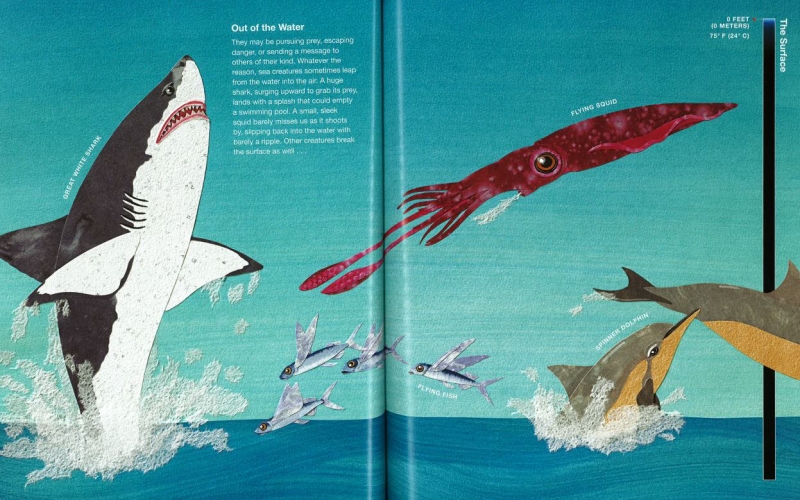
Notice the bar at the right side of the spread indicating the depth of each habitat. Readers will travel from the surface all the way to the bottom of the Marianas Trench.
The animals near the surface are mostly familiar—great white sharks, green sea turtles, bluefin tuna… But as the water turns blacker in the descent, not so much. I mean, what’s a girdle of Venus comb jelly? And those appear at the bottom of the sunlit zone … stranger creatures are yet to come!

I found myself reading a spread and then flipping to the back matter where I could find more information about each animal.
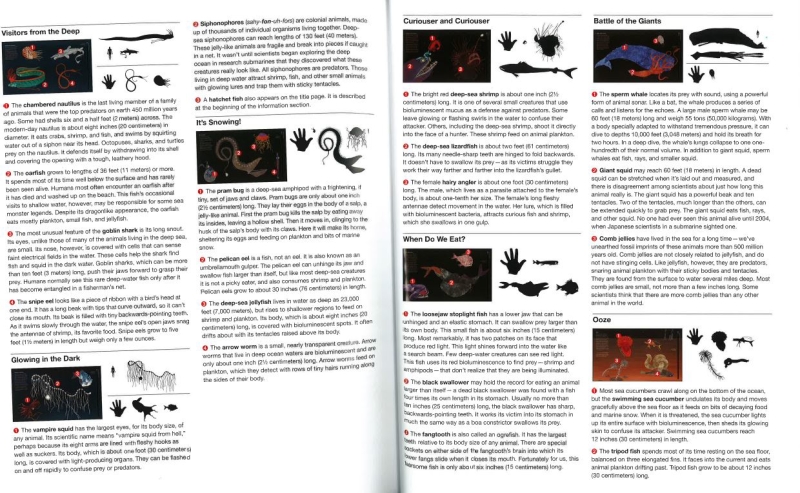
The back matter includes more details about each animal as well as a diagram comparing the size of the animal to a human hand or human body.
This title shows off alien-like wildlife. Students will think these animals are AWESOME! Bring in photos and videos to further delve into this mysterious world—like this one from National Geographic about deep sea oddities:
Connecting People to Ocean Wildlife
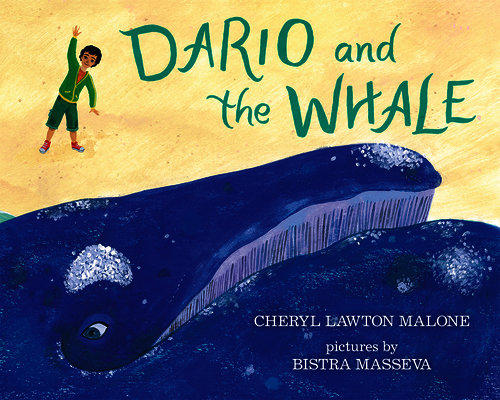 These two books tell stories (one inspired by a real-life interaction, the other a true event) where people connect to ocean wildlife. Both of these, coincidently, focus on whales. Whales have been a source of wonder for humankind for ages. According to traditional Inuit and Polynesian beliefs, whales are divine beings (Burleigh, 2015). Both of these stories shine light on these sacred beliefs.
These two books tell stories (one inspired by a real-life interaction, the other a true event) where people connect to ocean wildlife. Both of these, coincidently, focus on whales. Whales have been a source of wonder for humankind for ages. According to traditional Inuit and Polynesian beliefs, whales are divine beings (Burleigh, 2015). Both of these stories shine light on these sacred beliefs.
In Dario and the Whale (Grades P-3), by Cheryl Lawton Malone, a young Brazilian boy, Dario, comes to the coast each spring because of his mother’s work. Dario longs to meet a new friend. He finds one in a baby right whale.
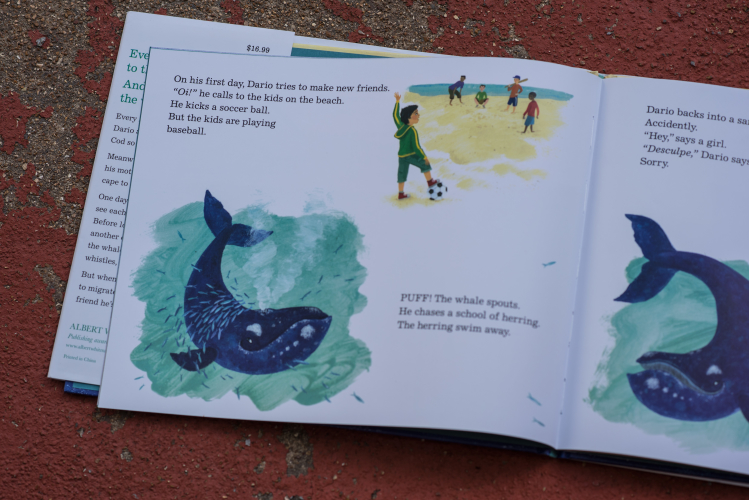
Dario has trouble making friends. So does the baby right whale.
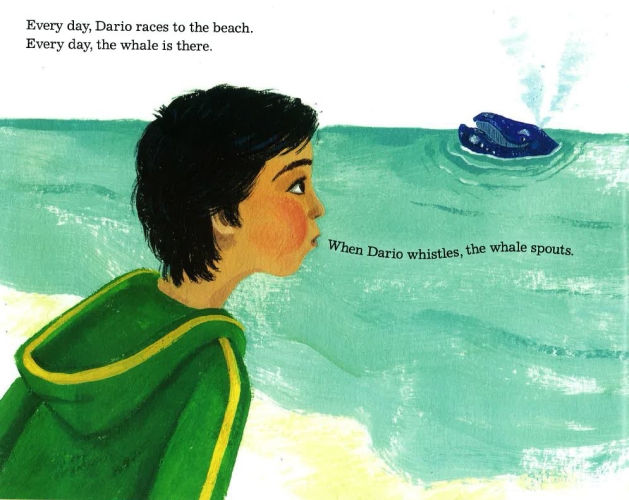
Dario and the whale’s daily play.
At the end of May the whales migrate, but the story suggests that Dario may have made a friend in a little girl along the way, too.


 This story was based on the author’s own real-life experience. While walking her dog on a Cape Cod beach one day, she saw a baby whale raise his head to see who was making all the noise (her barking dog). She concluded that “right whale calves are just as curious a human children.” The endnote includes this lovely anecdote as well as more information about right whales.
This story was based on the author’s own real-life experience. While walking her dog on a Cape Cod beach one day, she saw a baby whale raise his head to see who was making all the noise (her barking dog). She concluded that “right whale calves are just as curious a human children.” The endnote includes this lovely anecdote as well as more information about right whales.
This next story, Trapped: A Whale’s Rescue (Grades P-1, Level M, Lexile AD510), by Robert Burleigh, tells of a real-life whale rescue.
Lyrical language opens up this book and describes the activities of a humpback whale.
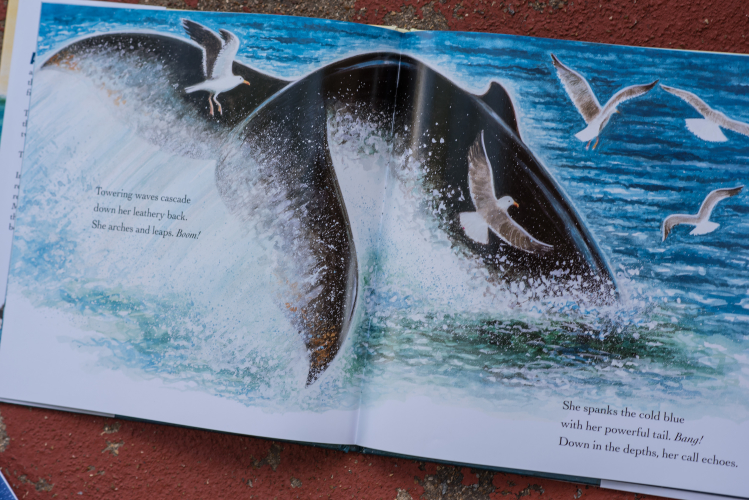
“She spanks the cold blue with her powerful tail. Bang! Down in the depths, her call echoes.”
But trouble awaits in the form of a man-made pollutant, discarded fishing nets. The whale becomes entwined in the fishing nets. Every twist and spiral makes it worse, until she becomes TRAPPED.

Rescuers come on to the scene and slowly, carefully cut this immense creature free.

When all the ropes have been removed, something magical happens: “The freed whales starts to swim. She moves among the cheering rescuers, softly nudging each one, as if saying thanks.”
This is, if you can believe it, a TRUE story. On December 11, 2005, near the San Francisco coast, fisherman spotted a humpback whale entrapped in ropes attached to crab traps. Rescuers were on the scene soon after, helping to free the trapped animal. The back matter details this amazing event and provides more information on rescuing whales and on the humpback whale species. Further resources (websites and books) are also listed.
This World Oceans Day (June 8) celebrate with illustrated books that will bring this mysterious world closer to the surface for students. For great classroom ideas, check out celebration ideas found on Worldoceanday.org.
More great books about the ocean…


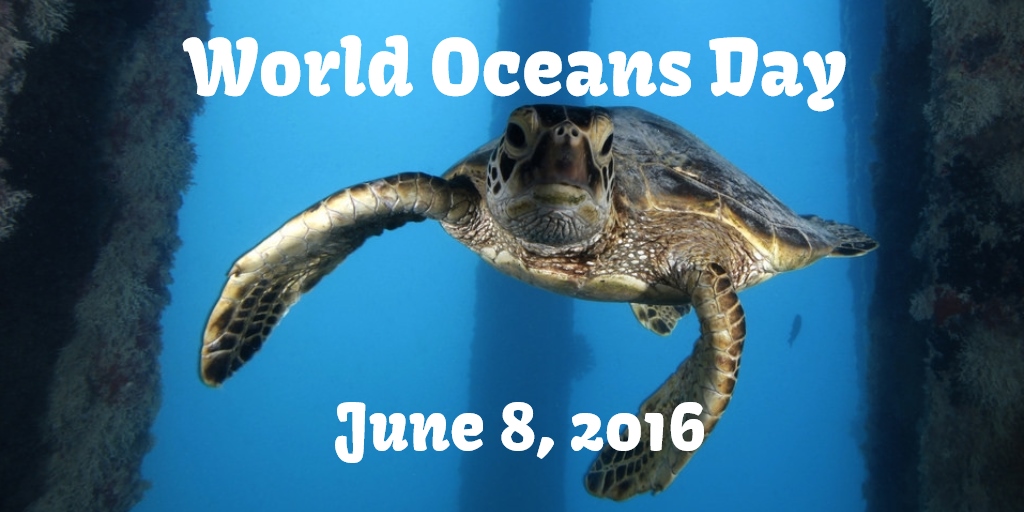
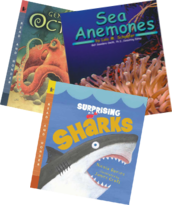
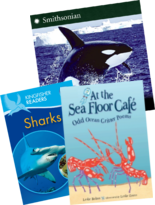
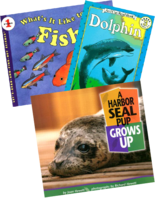


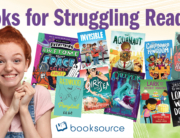

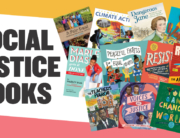
Leave A Comment